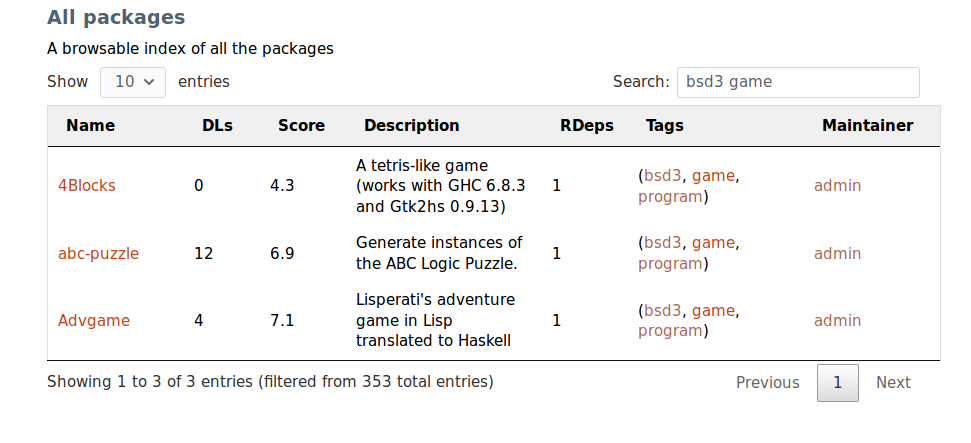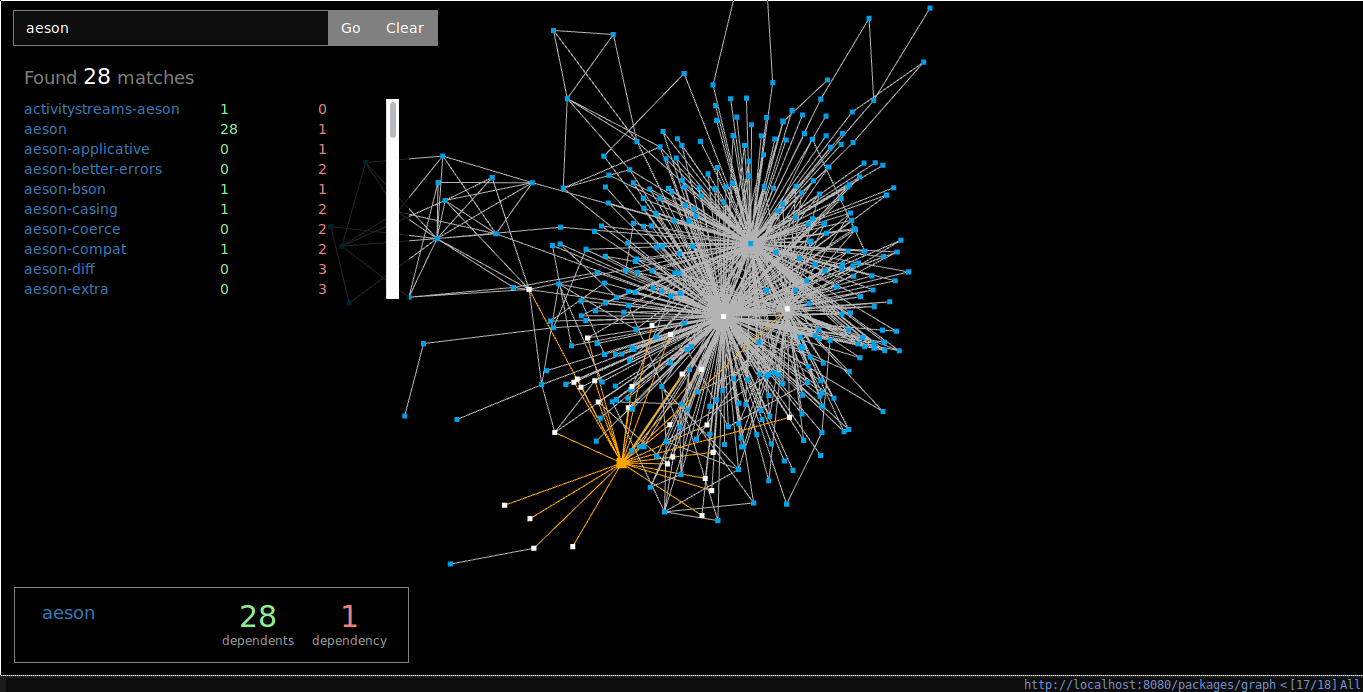Haskell Summer of Code Testimonial
This blog post marks the end of a pretty awesome summer!
The Haskell Summer of Code was a great learning experience and a wonderful opportunity to be a part of an open source organization and gain insight into its workings (It’s a lot more work than I thought it would be and kudos to you guys for keeping things running as smoothly as they have been running!)
A shout out to various people at #haskell for offering their guidance and helping me with my various doubts and my mentors for their guidance and for handing me a free rein.
You guys make haskell a lot more accessible to everyone :-)
A quick overview⌗
I got the opportunity to contribute to Hackage, the Haskell community’s central package archive of open source software.
It was the first time I got to work on an existing codebase of this scale (along with it being my first large Haskell project).
While I didn’t get to do everything I’d laid out in my proposal (which in hindsight seems a tad grandiose), I feel I’ve got the more important parts done.
The consolidated PR is here and is pending a review as I type this.
Summary⌗
What’s been done:
-
Tags
Previously, the tags didn’t get much love. They reflected the category in the
.cabalfile and whether or not it was a library/ executable.Now, any user can propose additional tags to packages from the package page after which the package maintainers/trustees can accept or discard them using a clickable UI. The proposed tags can be seen at
/package/:pkgname/tagsThis also brought about the need for tag aliasing wherein a trustee can merge tags together.
-
Browsable Package Index View
There is now a new route at
/packages/browsewith browsable of all the packages uploaded to Hackage.
A similar interface is present for filtering in the tag and category pages.
If tagging picks up, it’ll become a lot easier to search for packages.
-
Reverse Dependencies
Reverse dependencies used to be a Hackage feature until it was discontinued for being a memory hog.
It’s been rewritten as a
PackageId -> PackageIdmapping and looks to be performing reasonably as far as memory consumption is concerned.The main package page lists out the number of direct and indirect dependencies with more details available at
/package/:package/reversewhile the overall picture is available at/packages/reverse.In addition, after wasting far too much time trying to get d3.js to scale to about 10000 nodes, a WebGL visualisation of packages and their dependencies is available at
/packages/graph.
-
Voting
The voting was a low hanging fruit that needed to be addressed. Some tweaks were made to the voting algorithm along with a shiny new UI to accompany it (You can rate a package out of 3 lambdas!).

-
Some Minor Tweaks
In addition, there were a few minor changes that were made along the way.
A lot of the HTML code was restructured into separate templates as opposed to a single large file. The
Html.hsfile is still terribly large and could do with further breakup. Some changes were also made to the package page such as displaying executables and suggesting related packages among other things.
Future work⌗
There’s still quite a bit that can be done with regards to the areas worked on and I’d love to continue to work on the features and see them to completion.
-
The graph of packages and their dependencies is still rather basic. More interactivity and additional views can add to its utility.
-
Reinstating the reverse dependencies feature allows for some fairly complex questions to be answered like finding similar packages using dependencies, analysing build reports to make diagnoses, suggesting tags.
It can also be used to calculate page-rank or analyse where dependencies are being dropped over time leading to a better popularity metric.